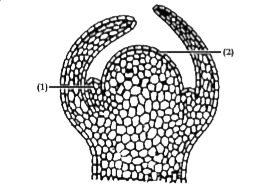Study the graph given below and answer the questions that follow :
(i) The curve 'b' is described by the following equation :
(ii) What does 'K' stand for in this equation ? Mention its significance.
(ii) Which one of the two curves is considered a more realistic one for most of the animal populations ?
(iii) Which curve would depict the population of a species of deer if there are no predators in the habitat ? Why is to so ?

Step by step video & image solution for Study the graph given below and answer the questions that follow : (i) The curve 'b' is described by the following equation : (dN)/(dt) = rN {(K-N)/(K)} (ii) What does 'K' stand for in this equation ? Mention its significance. (ii) Which one of the two curves is considered a more realistic one for most of the animal populations ? (iii) Which curve would depict the population of a species of deer if there are no predators in the habitat ? Why is to so ? by Biology experts to help you in doubts & scoring excellent marks in Class 12 exams.
Updated on:21/07/2023Similar Questions
Knowledge Check
The population growth is generally described by the following equation : dNdt=rN(K−NK) What does 'r' represent in the given equation ?
APopulation density at time 't'BIntrinsic rate of natural increaseCCarrying capacityDThe base of natural logarithm
The population growth is generally described by the following equation : dNdt=rN(K−NK) What does 'r' represent in the given equation ?
View SolutionStudy the diagram given below and answer the questions that follow:

Identify the above structure and mention its location
View SolutionStudy the diagram given below and answer the questions that follow :

Identify the above structure and mention its location in a plant.
View SolutionStudy the diagrams given below and answer the questions tht follow:

Mention two structural differences between 1 and 2
View SolutionStudy the diagram given below and answer the questions that follows :

Identify the above structure and mention its location in a flower .
View SolutionWhich of the following is considered as more realistic growth model ?
View SolutionStudy the figure given below and answer the questions that follow :

What property of gas Y does this experiment demonstrate ?
View Solution

